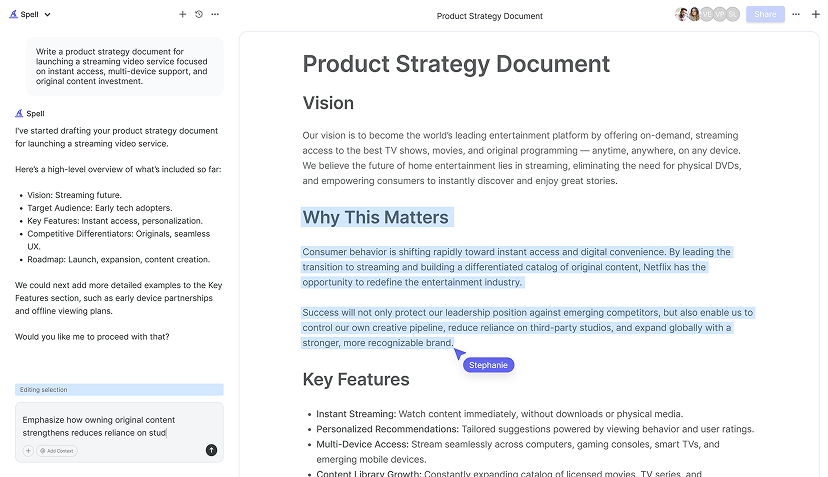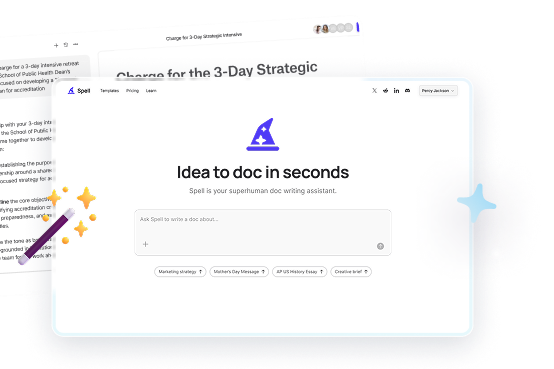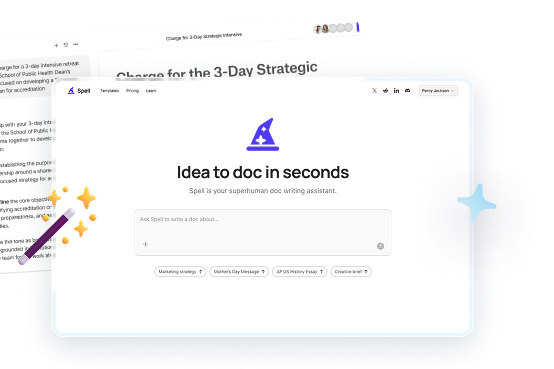Writing a 10-page paper in two hours might sound like a plot twist from a suspense novel, but it's more achievable than you think. With a little preparation, a clear strategy, and a sprinkle of time management magic, you can turn this seemingly impossible task into a manageable challenge. I'll guide you through a practical approach to make this happen, complete with tips and examples to keep you on track and motivated.
Get Your Environment Ready
First things first, you need the right setup. Imagine trying to bake a cake without the ingredients prepped or your oven preheated. It would be quite the mess. The same goes for writing. Set up a distraction-free workspace where you can focus solely on your paper. This might mean finding a quiet room, using noise-canceling headphones, or setting your phone to "Do Not Disturb" mode. Here's a quick checklist to help:
- Clear your desk: Remove anything that might steal your attention.
- Gather your materials: Have your notes, books, or any resources you need at hand.
- Set the mood: Play some background music if it helps you concentrate or prefer silence if that works better.
- Time your sessions: Use a timer to break your writing into focused sessions, like the Pomodoro Technique (25 minutes of work followed by a 5-minute break).
By prepping your environment, you're setting yourself up for a productive writing session. It‘s all about ensuring that once you start writing, nothing can stop you.
Plan Before You Write
Jumping straight into writing without a plan is like setting off on a road trip without a map. You might get somewhere, but it probably won't be your intended destination. Take a few minutes to outline your paper. This helps organize your thoughts and ensures you have a clear path from introduction to conclusion.
Here‘s a simple structure to consider:
- Introduction: State your thesis and set the tone for your paper.
- Body Paragraphs: Each should cover a specific point that supports your thesis.
- Conclusion: Summarize your arguments and reinforce your thesis.
For example, if your paper is about climate change, your outline might look like this:
Introduction
- Hook: Start with a striking fact or question about climate change.
- Thesis: Discuss the impact of climate change and the importance of action.
Body Paragraph 1: Causes of Climate Change
Body Paragraph 2: Effects on the Environment
Body Paragraph 3: Economic Impacts
Body Paragraph 4: Social and Health Consequences
Body Paragraph 5: Solutions and Mitigation Strategies
Conclusion
- Recap main points
- Restate the importance of addressing climate change
- Call to action or final thought
This outline ensures you stay focused and cover all necessary points without wandering off-topic.
Write the Introduction Last
It may sound counterintuitive, but starting with the introduction can sometimes slow you down. It's like trying to write the opening scene of a movie before you've fleshed out the plot. Instead, dive into your body paragraphs first. Once you‘ve developed your main points, crafting the introduction becomes much easier because you know exactly what you‘re introducing.
When you're ready to tackle the introduction, remember to:
- Start with a hook: Grab your reader‘s attention from the get-go.
- Introduce your topic: Provide a brief overview of what the paper will cover.
- State your thesis: Clearly express the main argument or purpose of your paper.
Here‘s a sample introduction based on our climate change topic:
"Climate change is not a distant threat. It is happening now, affecting ecosystems and communities worldwide. From rising sea levels to extreme weather events, its impacts are undeniable. This paper explores the causes, effects, and potential solutions to climate change, highlighting the urgent need for collective action."

Focus on One Section at a Time
When faced with a task as large as a 10-page paper, it's easy to feel overwhelmed. The secret is to break it down into smaller, manageable sections. Focus on writing one paragraph or section at a time, giving it your full attention before moving on to the next. This method keeps your writing organized and prevents burnout.
For each section, follow these steps:
- Write your topic sentence: Clearly state the main idea of the paragraph.
- Provide supporting evidence: Use research, data, or examples to back up your point.
- Explain the evidence: Clarify how your evidence supports your argument.
- Conclude the paragraph: Summarize the point and lead into the next section.
Let‘s say you‘re writing the paragraph on the economic impacts of climate change:
"Climate change poses significant economic challenges, affecting industries, jobs, and economies worldwide. For instance, agricultural yields are declining due to unpredictable weather patterns, leading to increased food prices. Additionally, natural disasters such as hurricanes and floods cause billions of dollars in damage each year. These financial burdens highlight the need for proactive climate policies to mitigate future economic risks."
By focusing on one section at a time, you can maintain clarity and coherence throughout your paper.
Keep an Eye on the Clock
Time management is crucial when you're racing against the clock. Set a timer for each section of your paper to keep yourself on track. For instance, you might allocate 15 minutes per page, giving you a bit of buffer time to review and edit.
Here‘s a rough breakdown of how to allocate your time:
- Planning and Outlining: 10-15 minutes
- Writing Body Paragraphs: 90 minutes (9 body paragraphs at 10 minutes each)
- Writing Introduction and Conclusion: 15-20 minutes
- Review and Edit: 10-15 minutes
This schedule helps you stay focused and ensures you have time to polish your paper before submission.
Edit As You Go
Editing your paper doesn‘t have to wait until the end. In fact, making small edits as you write can save you time later. Correct typos, adjust awkward sentences, and refine your language as you go along. This way, by the time you finish the paper, it‘s already in pretty good shape.
Here‘s a quick editing checklist:
- Check for clarity: Ensure each sentence clearly conveys your idea.
- Watch out for typos: Correct any spelling or grammatical errors.
- Refine your language: Use precise language and avoid unnecessary jargon.
- Verify your facts: Double-check your sources and ensure your data is accurate.
Editing as you go keeps your writing process smooth and efficient, reducing the workload at the end.

Use AI Tools to Streamline the Process
If you find yourself stuck or behind schedule, consider leveraging technology to ease the load. Tools like Spell can be a game-changer. With its AI-powered editor, you can draft, edit, and refine your document quickly. Imagine working in a Google Docs-like environment but with AI that helps polish your writing as you go. It's a real-time saver and can help you maintain the quality of your paper under tight deadlines.
Take Short Breaks to Recharge
Writing for two hours straight can be exhausting. To keep your energy and focus up, incorporate short breaks into your writing session. This strategy, often referred to as the Pomodoro Technique, involves working for 25 minutes, then taking a 5-minute break. These breaks help refresh your mind and prevent burnout, so you can return to your paper with renewed focus.
During your breaks, try:
- Stretching: Get up and move around to relieve tension.
- Hydration: Drink water to stay hydrated and alert.
- Breathing exercises: Take deep breaths to calm your mind.
- Quick walk: A short walk can clear your head and boost creativity.
Remember, breaks are not a waste of time. They're an investment in your productivity.


Review and Polish the Final Draft
Once you've completed the writing process, it's time to review and polish your paper. This final step ensures your work is coherent, error-free, and ready for submission. Here‘s a quick checklist for the review process:
- Check for cohesion: Ensure your paper flows logically from one point to the next.
- Look for consistency: Verify that your formatting, tone, and style are consistent throughout.
- Proofread: Read through your paper to catch any remaining typos or errors.
- Seek feedback: If possible, have someone else read your paper for an objective perspective.
With these steps, you‘ll be able to refine your paper and present a polished final draft that meets your expectations and requirements.
Final Thoughts
Writing a 10-page paper in two hours may seem like a daunting task, but with effective planning and time management, it‘s definitely doable. Remember, tools like Spell can make the process smoother by providing AI-powered assistance. With practice and the right approach, you can tackle such writing challenges with confidence and ease.






